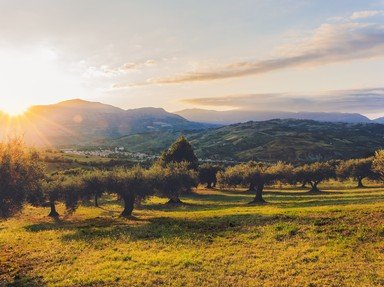Quiz Answer Key and Fun Facts
1. The drupe-bearing plant named Olea europaea bears which iconic Mediterranean fruit?
2. What flowering plant of the Mediterranean, grown for culinary use and for essential oils, lends its name to a color?
3. What Biblical nickname is sometimes applied to the carob tree?
4. The stone pine, Pinus pinea, is known by which other name due to the distinctive shape of its canopy?
5. Quercus ilex, the holly oak, is a large, evergreen oak native to the Mediterranean. To what does it owe its common and scientific names?
6. Which native Mediterranean tree is commonly used as an ornamental plant and in topiary, and additionally offers its whole leaves to Italian cooking?
7. Arbutus unedo is an evergreen shrub or small tree whose common name points to the resemblance of its fruits with a delicious summer fruit that, however, does not grow on a tree. What name is this?
8. The name of which evergreen shrub of the Lamiaceae family, with delicate bluish-purple flowers, comes from the Latin for "dew of the sea"?
9. Buxus sempervirens, the common box or European box, is native to western and southern Europe, northwest Africa, and southwest Asia, but found in most European locales. It is used mainly for what purpose?
10. An English ruling house was named after this plant of the legume family with sweet-smelling yellow flowers that grows in moorland and other open areas. What is its common name, which might remind you of an implement used for cleaning your home?
Source: Author
LadyNym
This quiz was reviewed by FunTrivia editor
rossian before going online.
Any errors found in FunTrivia content are routinely corrected through our feedback system.
